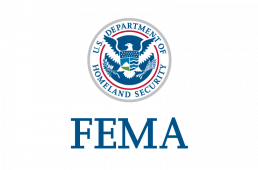
October 8, 2021 | by Anna Orendain
As one of the largest states and home to several different environmental biomes, Texas is no stranger to severe weather. But when disaster strikes and the health and safety of Texans are impacted, it’s vital to receive relief as quickly as possible.
Fortunately, the Federal Emergency Management Agency (FEMA) announced in early September that they’re implementing policy changes that are meant to improve access to disaster assistance for underserved communities.
Alejandro N. Mayorkas, the Department of Homeland Security Secretary states, “Our Department has an obligation to ensure we provide equal access to disaster relief and assistance to all survivors who are in need.”
FEMA’s policy changes are detailed below:
Before FEMA is allowed to provide certain types of assistance, they are required by law to verify a survivor’s occupancy or ownership of a home. Going forward, several new types of documentation will be acceptable.
Additionally, if survivors have successfully verified occupancy to FEMA from a previous disaster within the past two years, then they will not need to verify occupancy again.
Instead, survivors may now provide documentation of occupancy within a year before the disaster, and will be able to submit those documents to a FEMA staff member for on-site verification.
Documentation now eligible to prove occupancy:
Documentation now eligible to prove ownership:
FEMA’s Other Needs Assistance (ONA) grants will now provide a limited amount of financial assistance to homeowners and renters with property damage caused by the disaster, including homes that are still considered habitable.
Their procedures for inspecting property damage have also been revised, allowing for better identification of disaster-caused mold.
FEMA will now aid survivors who experienced a disaster-caused disability and will require new accessibility adjustments to their home, including the addition of ramps or grab bars. This assistance will be available to all survivors, regardless of whether those components were in their home before the disaster event.
If you’d like further information on this subject, we recommend reading our previous “Housing For When Disaster Strikes” blog entry, which details both FEMA’s and TSAHC’s responses to housing needs brought on by natural disasters.
On the House blog posts are meant to provide general information on various housing-related issues, research and programs. We are not liable for any errors or inaccuracies in the information provided by blog sources. Furthermore, this blog is not legal advice and should not be used as a substitute for legal advice from a licensed professional attorney.
TSAHC reviews all blog comments before they are posted to ensure a positive experience for our online community. Off-topic comments; hostile, derogatory or deliberately insulting comments; and comments specifically promoting goods and services will not be posted.
Approved comments will be published in their entirety. Personal information will not be removed unless it pertains to someone other than the person submitting the comment. For more information, please see our Comment Posting Guidelines.
To remove a previously submitted and published comment, please contact Anna Orendain at [email protected].
If you have a question regarding any of TSAHC's programs, please contact us.
